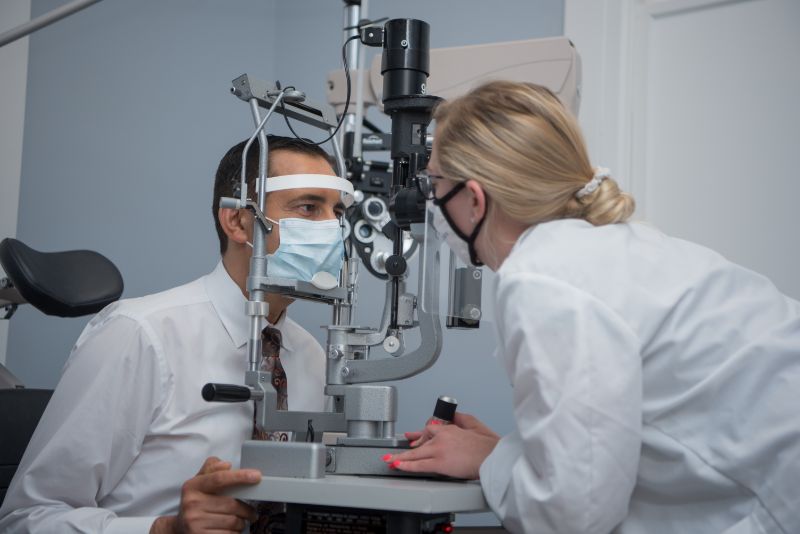Trustworthy Opticore Optometry: Elevating Your Eye Health Experience
Trustworthy Opticore Optometry: Elevating Your Eye Health Experience
Blog Article
The Comprehensive Eye Exam: What to Anticipate Throughout Your Visit to the Eye Doctor
A visit to the eye physician for a thorough eye examination is even more than a regular exam; it is an essential step in safeguarding your aesthetic wellness. What exactly occurs throughout the eye wellness assessment, and exactly how does it influence the prescription process?
Initial Appointment
The initial assessment during an eye exam works as an important foundation for recognizing a patient's visual wellness demands. This stage establishes the tone for the entire assessment procedure, enabling the eye doctor to collect crucial details regarding the client's case history, way of life, and specific vision issues. By carefully evaluating any pre-existing problems, drugs, or previous surgical procedures, the eye care specialist can tailor the examination to address private demands properly.

Moreover, the initial assessment is a chance for patients to articulate any kind of concerns or concerns, fostering a joint partnership with their health care service provider. This interaction not just makes certain that the patient really feels educated and comfortable however also empowers them to participate actively in their eye health and wellness management. Jointly, these discussions make it possible for the eye doctor to devise an individualized examination strategy, making certain optimum treatment and specific diagnosis.
Aesthetic Skill Examination
Beginning the core components of an eye evaluation, the aesthetic skill test is created to assess the sharpness and clarity of a client's vision. This critical analysis aids figure out exactly how well an individual can determine letters or icons at a standardized range, normally using a Snellen chart (Optometrist Riverside). The graph comprises rows of letters that lower in size from leading to base, with the individual positioned at a customary distance of 20 feet
Throughout the examination, the person is asked to cover one eye and check out out loud the smallest line of letters they can see plainly. This process is duplicated for the other eye. The results are videotaped as a portion, with 20/20 vision suggesting regular visual acuity-- where the individual can see at 20 feet what a person with normal vision can see at that range.
The aesthetic skill test also determines potential refractive mistakes such as myopia, astigmatism, or hyperopia, which could require corrective lenses. By establishing a standard of aesthetic performance, the examination is a crucial diagnostic device that aids the eye care expert in developing an ideal treatment plan customized to the patient's unique aesthetic requirements.
Eye Health Evaluation
Complying with the aesthetic skill examination, an extensive eye health analysis is conducted to make sure the overall wellness of the eyes. This important section of the eye test involves a thorough analysis of both the internal and outside frameworks of the eye. The ophthalmologist or eye doctor starts by taking a you can look here look at the eyelids, cornea, conjunctiva, and sclera for any type of indicators of infection, inflammation, or problems. Using specialized equipment like a slit light, the specialist gets an amplified sight of the eye's makeup, making it possible for thorough inspection.
Next, interest shifts to the internal frameworks. With the use of ophthalmoscopy or fundus digital photography, the retina, optic nerve, and capillary are meticulously assessed. This action is vital for recognizing conditions such as retinal detachment, glaucoma, or diabetic retinopathy. In many situations, student dilation is performed to improve exposure of the interior eye frameworks, although this might result in momentary light sensitivity for the client.
In addition, intraocular pressure is measured to evaluate for glaucoma danger. This is generally done making use of tonometry, which can detect elevated pressure degrees that could suggest prospective damage to the optic nerve. Collectively, these evaluations form a comprehensive evaluation to preserve ocular health.
Refraction and Prescription
Refraction is a sophisticated procedure carried out by eye care experts to establish the accurate lens power needed to deal with refractive errors such as myopia, presbyopia, hyperopia, and astigmatism. The goal of this procedure is to assess how light bends as it passes via the eye, look at this site enabling the professional to identify whether restorative lenses are essential for boosted aesthetic acuity.
During the refraction procedure, the client is asked to check out a phoropter, a tool which contains numerous lenses. The expert will systematically transform these lenses and ask the client to compare clarity in between options up until the most effective feasible vision is achieved. This procedure is essential in crafting an accurate prescription that defines the proper lens power for eyeglasses or call lenses.
The prescription stemmed from this procedure not only maximizes vision but also works as a structure for choosing suitable rehabilitative eyeglasses. It is vital to guarantee that prescriptions are consistently updated, as adjustments in vision can happen with time, emphasizing the value of routine eye evaluations. This precise focus to detail helps keep clear, comfy vision in every day life.
Follow-Up Suggestions

During a follow-up browse through, the eye physician will certainly conduct a collection of tests to evaluate aesthetic skill and check for any kind of modifications in vision that may necessitate an update to the prescription. In addition, the follow-up provides an opportunity to talk about any kind of pain or issues experienced with present glasses. Changes can be made to ensure comfort and efficacy, whether through lens alteration or framework changes.
For individuals with continuous conditions such as glaucoma, diabetes-related eye problems, or macular deterioration, more regular follow-ups may be essential. These visits are essential for managing and potentially reducing the progression of eye disease. Complying with these suggestions can dramatically contribute to keeping visual health and preventing lasting problems.
Final Thought
The comprehensive eye test is an important process for preserving visual wellness, encompassing a thorough analysis of clinical history and vision issues. Secret elements consist of the aesthetic skill examination, which reviews vision quality, and the eye health and wellness assessment, which checks out the total condition of the eyes.
A check out to the eye physician for an extensive eye exam is even more than a regular examination; it is a vital step in safeguarding your aesthetic health.Kicking off the core components of an eye examination, the visual acuity test is made to evaluate the intensity and clearness of a patient's vision.Adhering to the visual acuity examination, a thorough eye health and wellness analysis is performed to ensure the total health of the eyes. These visits permit the eye care expert to keep an eye on modifications in vision, upgrade prescriptions, and analyze the overall wellness of the eyes. Key parts consist of the aesthetic acuity test, which assesses sight clearness, and the eye health evaluation, which analyzes the general condition of the eyes.
Report this page